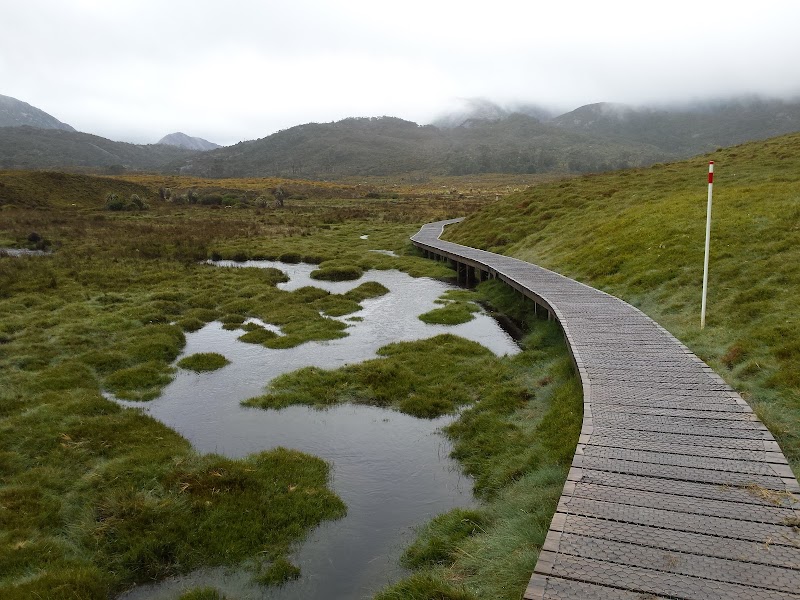
Explore Tasmania’s Walking Festival at Lake St Clair Village
Experience the vibrant Tasmanian Walking Festival at Lake St Clair Village, where rugged wilderness meets well-marked trails. From forest strolls to challenging summits, this event offers something for every hiker ready to engage with Tasmania's fierce natural beauty.
Wear Waterproof Footwear
Tasmania’s unpredictable weather often turns trails wet and muddy. High-quality waterproof hiking boots with good ankle support will keep your feet dry and stable on slippery surfaces.
Start Early to Maximize Daylight
Trails range from several hours to a full day. Begin hikes early to avoid trekking in diminishing light and to fully enjoy cooler morning conditions.
Pack Adequate Water and Snacks
Carry at least 2 liters of water and high-energy snacks. Hydration and fuel are critical, especially on longer, more demanding trails where natural water sources may not be safe to drink.
Prepare for Variable Weather
Layer clothing to adapt quickly to temperature swings. A waterproof jacket and quick-dry base layers help you stay comfortable from cool mountain air to sudden rain showers.
Explore Tasmania’s Walking Festival at Lake St Clair Village
The Tasmanian Walking Festival, held near Lake St Clair Village, delivers an authentic encounter with Tasmania’s rugged wilderness. Located midway between Launceston and Hobart, the festival invites adventurers of all levels to navigate trails that weave through dense temperate rainforests and along glacial lakes carved by ancient forces.
Festival hikes range from short forest walks to challenging multi-day treks, offering options suited for casual explorers and seasoned hikers alike. Trails typically stretch from 5 to 25 kilometers, with elevation gains varying between 200 to 900 meters, depending on the route. The terrain shifts from soft, mossy forest floors to rocky, uneven mountain paths, where the ground seems to push back just enough to demand respect.
You’ll find yourself walking beneath towering myrtle and sassafras trees, their thick canopies filtering dappled light as birds call insistently overhead. The nearby waters of Lake St Clair dare you closer with their glassy surface, reflecting alpine peaks that hold snow patches late into spring. The natural landscape acts with intent—gusts of wind will nudge you off balance, while rivers often hurry past like a forceful guide, challenging your pace.
Preparation is key. Reliable waterproof boots are a must; the Tasmanian climate can change without warning, turning trails slippery and demanding sturdy footing. Carry at least two liters of water and quick snacks—energy gels or nuts work well—especially on longer routes. Setting off early maximizes daylight, while layering clothing helps you adjust to sudden temperature shifts.
Even casual hikes here pulse with a sense of wildness, as the environment remains fiercely itself. Respect for nature’s unpredictability is part of the experience, making every summit earned and every valley crossed meaningful. For those who seek a blend of natural beauty, challenge, and practical adventure, the Tasmanian Walking Festival at Lake St Clair Village offers a distinctly grounded yet invigorating outing.
Whether you aim for gentle forest tracks or steep ascents with panoramic views, this pilgrimage into Tasmania’s heartland leaves no room for complacency—only for appreciation of a landscape unapologetically alive.
Nearby Trips
All Adventures
Boat Charters
Water Activities
Adventures near Lake St Clair Village, Tasmania
Discover the unique and memorable adventures that make Lake St Clair Village, Tasmania special.
Frequently Asked Questions
How do I reach Lake St Clair Village for the festival?
Lake St Clair Village is accessible via the Lyell Highway (A10), roughly a 2.5-hour drive from Launceston. Shuttle services sometimes run during the festival from major hubs like Hobart and Launceston.
Are guided hikes available during the festival?
Yes, the festival offers guided walks led by experienced local rangers. These range from easy to challenging routes, providing insights into the environment and Aboriginal heritage.
What wildlife can I expect to see on the trails?
Keep an eye out for wombats shyly crossing paths at dawn, and listen for the distinct calls of Tasmanian pademelons. Birdlife includes the brightly coloured green rosella and elusive black currawong.
Is camping allowed in Lake St Clair Village?
Camping is permitted in designated areas, but it requires prior booking during the festival due to demand. Facilities are basic, so be prepared for minimal amenities.
Can I do day hikes only, or is multi-day trekking encouraged?
Both options are supported. Shorter routes suit day hikers, while dedicated trails like the multi-day walks on the Overland Track offer a deeper wilderness experience.
Are there any environmental rules I should follow?
Visitors must adhere to strict 'Leave No Trace' principles, respect wildlife, and stick to marked trails to avoid damaging sensitive ecosystems unique to the Tasmanian wilderness.
Recommended Gear
Waterproof Hiking Boots
Essential for traction and foot protection on wet, uneven terrain across all seasons.
Layered Clothing
Allows quick adjustment to sudden weather changes, from chill to heat.
Hydration Pack or Water Bottles
Crucial for maintaining hydration, especially during warmer months and longer hikes.
Compact First Aid Kit
Preparedness for scrapes or blisters is important in wild, rugged terrain.
Local Insights
Hidden Gems
- "Shadow Lake Lookout offers stunning panoramic views with fewer visitors outside main festival events."
- "The Pencil Pine Falls trail provides a peaceful alternative route with moss-covered ferns carpeting the forest floor."
Wildlife
- "Spot the giant freshwater crayfish in cool mountain streams near Lake St Clair."
- "Listen for the haunting calls of the Tasmanian native hen in the early mornings."
History
"The area is on the traditional lands of the Palawa people, with cultural sites marking their millennia-old relationship to the land. Lake St Clair also holds significance from Tasmania’s early conservation efforts dating back to the early 20th century."